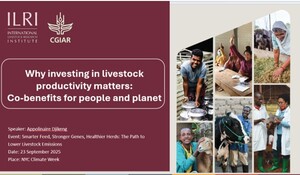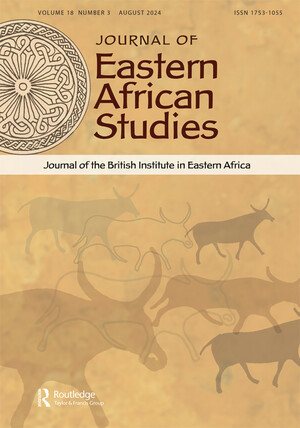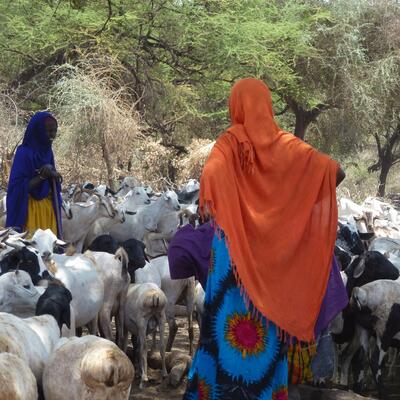
Can systems thinking assist policymakers navigate the complexity of the livestock sector in developing countries?
Livestock systems are more than just livestock. They cut across sectors such as water, energy and health and are dynamic, consisting of many interconnected and interdependent parts that constantly influence one another. Because of these interconnections, any policy or action to fix one part of the system will likely have unintended consequences – positive and negative. For example, efforts to reduce emissions from livestock could negatively impact food and nutritional security and the health of local communities by reducing overall production. And increasing demand for livestock products could accelerate the decline of biodiversity, especially in rangelands, in order to boost livestock production.
Historically, policymaking has taken a narrow approach to the relationship between food and other sectors. In most developing countries, the government response to livestock systems challenges and opportunities is still too narrowly focused on livestock-centred practices driven by the need to increase the production of milk, meat, eggs and other livestock products. Meanwhile, other important pathways for progress, such as building climate resilience, food distribution networks, health and nutrition, are typically limited to sectoral policies. While the need to transition livestock sector policymaking to holistic systems thinking is urgently needed, the prospect of system transition is daunting, not only from a logistical perspective but also because it requires new ways of thinking about and addressing complex problems. Taking on a system thinking – from production to consumption as it intersects with finance, infrastructure, trade, health, climate change etc. – to complement established approaches in policymaking represents decision-makers with the best bet for making real progress towards this daunting transition.
To make the shift to systems thinking, the International Livestock Research Institute (ILRI) Policies and Foresights team facilitated a capacity-strengthening workshop for 11 African and South Asia ministries of agriculture and livestock officials. Participants were from Kenya, Tanzania, Botswana, the Gambia, Cameroon, Egypt, Zimbabwe, India and Nepal. The training sought to equip participants to manage the inherent uncertainty in livestock systems by integrating System Dynamics modelling into livestock value chain analysis to get information on trends, scenarios and trade-offs necessary. The training included using web-based simulation interfaces linked directly to System Dynamics models, which serve as a decision-support tool for policymakers and allow instantaneous simulation into the future under different scenarios and assumptions. For three days, the ILRI team engaged the government policy teams on how Systems Dynamics modelling can improve the understanding of livestock value chains.
We heard from the participants the different systemic challenges and competing interests they navigate as they work to improve the productivity of their countries’ livestock systems to increase food and nutritional security while decreasing livestock’s climate and environmental impact. They mentioned that many governments have already identified priority value chains to develop, based on their goals to achieve food and nutritional security, addressing demand, meeting livelihood needs and promoting economic growth.
However, they would like to have better tools to analyse the impacts of changes in the value chain on the actors including producers, processors, transporters and sellers. In addition, tools are needed to analyse the environmental impact of change on water, land use and soil quality, and whether the production ambitions would be attainable, given institutional and environmental resource constraints. Workshop participants engaged in a range of small group activities to collaboratively develop a conceptual map of the problem and prioritize and map the impact of interventions on model architecture. Participants identified collaboration and co-production as the unique and highly valued aspects of developing dynamic simulation models.
It was clear from the workshop that policymakers need support to apply systems thinking in their decision-making processes. While the workshop participants showed interest in using System Dynamics modelling to support livestock policy decision-making, its application may present considerable challenges for policymakers as government processes and funding mechanisms tend to reinforce the siloed status quo of policymaking.
Africa's livestock systems are highly complex, with all their activities, from production to consumption affecting countries’ national health and nutrition, environmental sustainability, livelihoods and employment. This complexity is compounded by a policy context where actions on food, health, agriculture and climate remain siloed into different ministries. Policymakers have, therefore, to navigate tough trade-offs, for example, that balance the nation’s health, education, national security and food systems priorities, all of which need substantial budgetary allocation.
In the above scenario, Systems Dynamics modelling is an ideal problem-solving framework to understand the system trade-offs and build policy coherence due to its ability to delineate, describe and analyse multiple interacting systems and problems, as well as help, define and select solutions to those problems when applied in decision-making contexts. It is an especially attractive approach for policymakers because it can interact with other policy areas that overlap with livestock, therefore, has the potential to conceptualize interconnected issues across policy areas.
Further, with ILRI supporting governments in Africa and South Asia with the development and rollout of Livestock Master Plans, System Dynamics modelling can be applied to assess the efficacy and cost-effectiveness of different interventions at the value chain level before implementation, potentially leading to the rollout of only those interventions that deliver impact. It can also be deployed to assess the effect of interventions on input providers across the value chain, such as traders, processors etc. The interface of the systems dynamics tool provides the ability to run model scenarios independently of the modelling team to provide timely responses to questions (e.g. switching interventions on and off), which could facilitate policy conversations that could guide the prioritization of investments.
The value that Systems Dynamics modelling brings to livestock policy decision-making is greater clarity that allows policymakers to understand or identify multiple interacting factors that affect the livestock sector and develop interventions or solutions based on the insights from the model. It is a well-suited approach for understanding livestock systems for policymakers who want to consider multiple short-term perspectives to make policy decisions while also transitioning to big-picture system thinking that takes a broader perspective and is keen on finding root causes for improvement.
Learn more about livestock master plans
Learn more about System Dynamics modelling



















